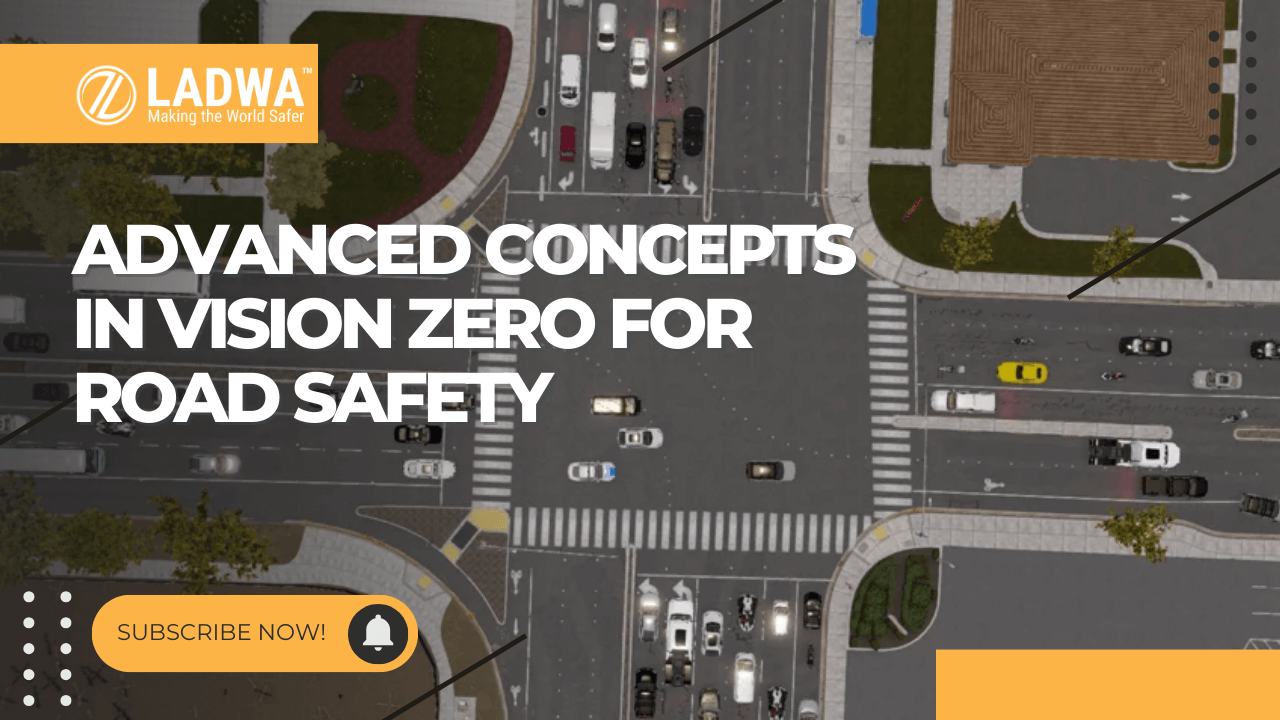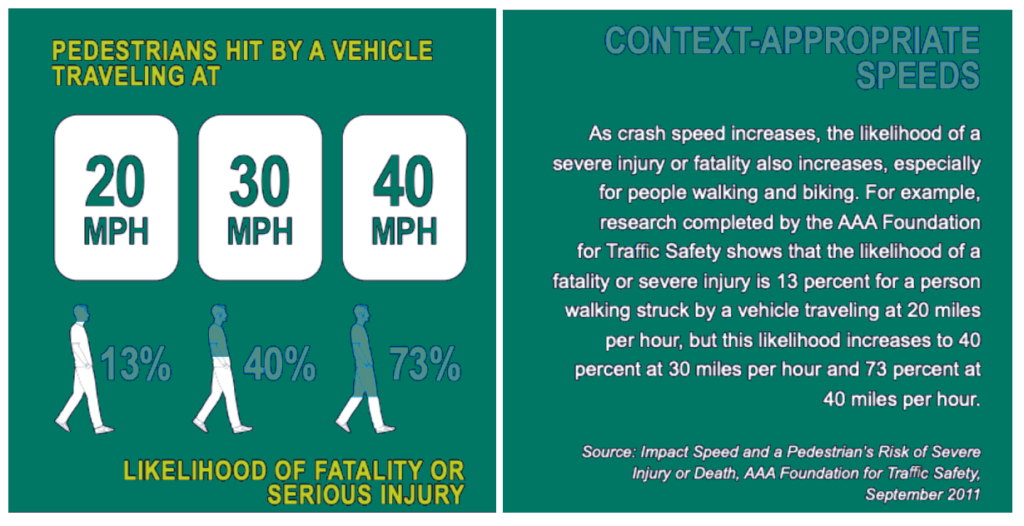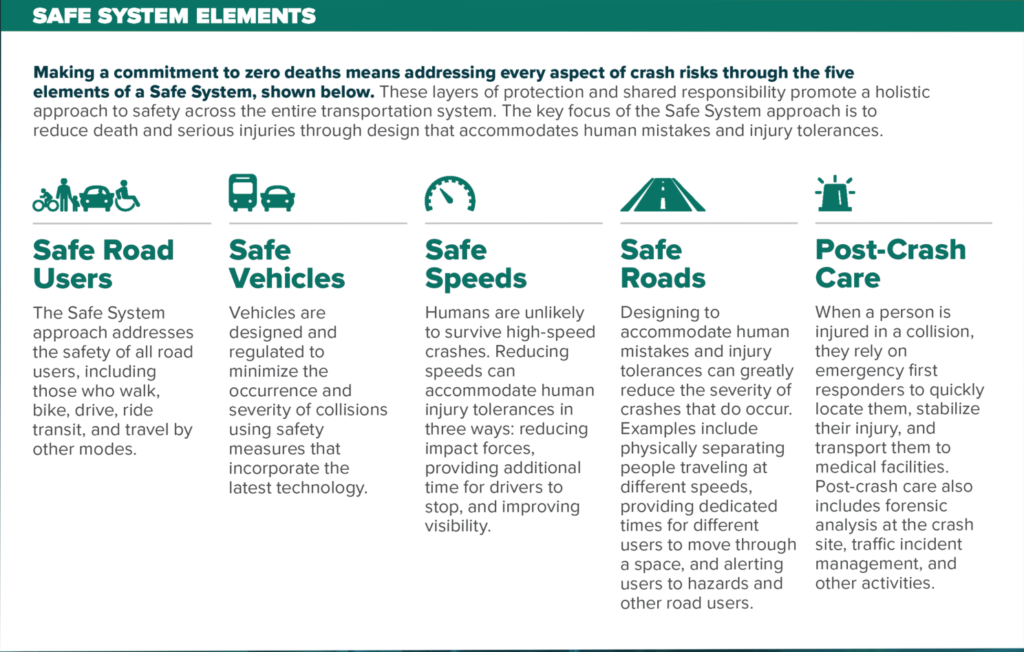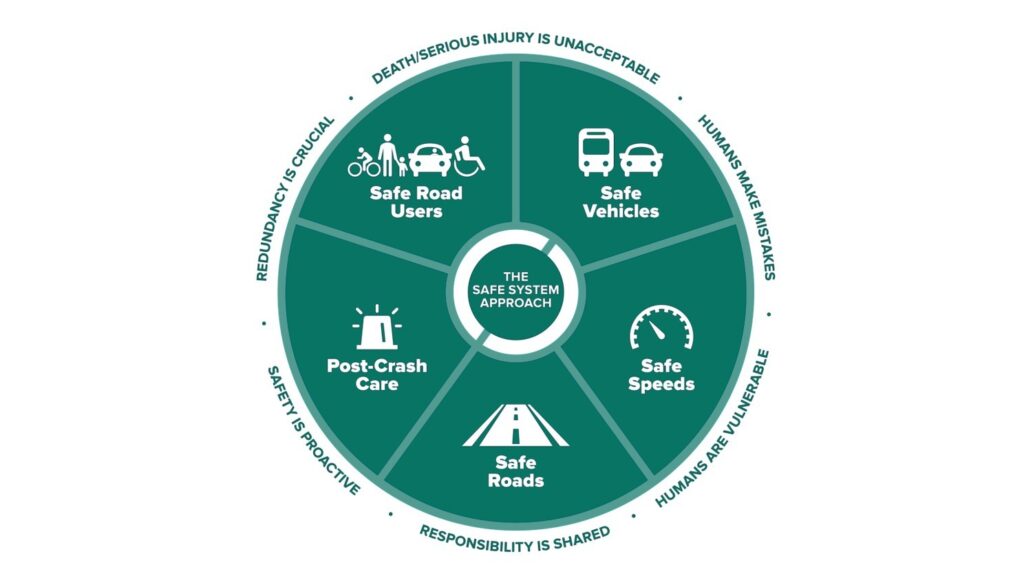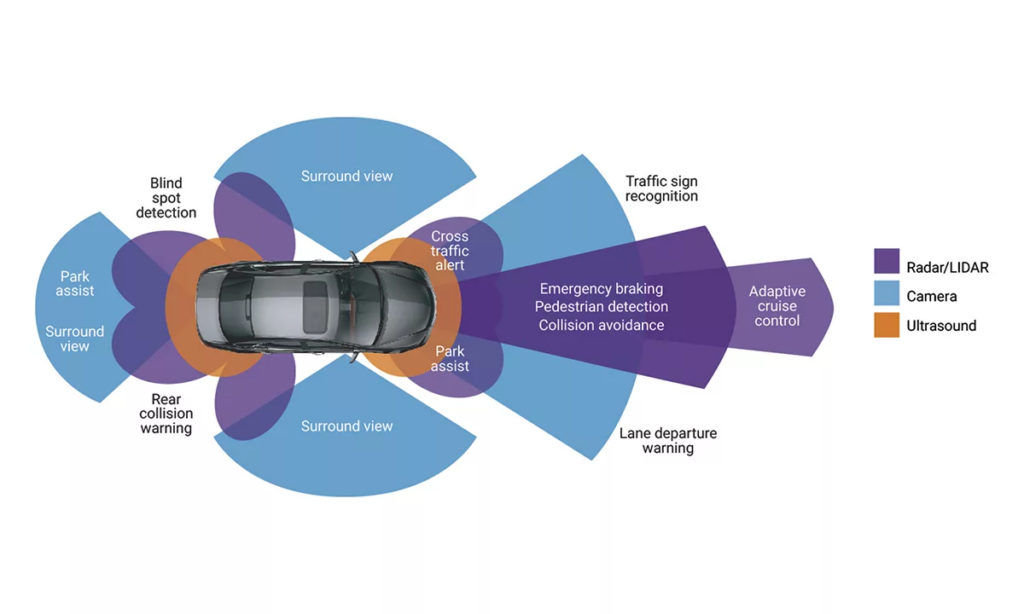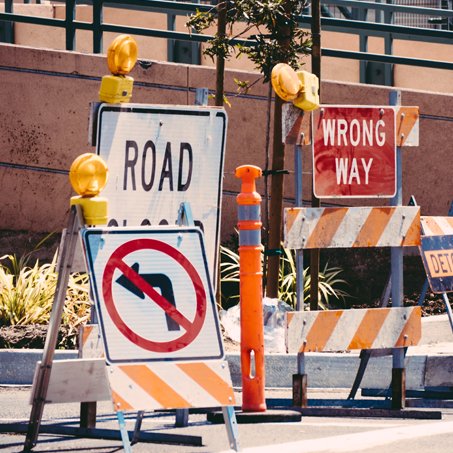Vision Zero is an ambitious road safety strategy that aims to eliminate all traffic fatalities and severe injuries while ensuring safe, healthy, and equitable mobility for all. Originating in Sweden in the late 1990s, Vision Zero has since been adopted by numerous cities and countries around the world. The fundamental principle of Vision Zero is that no loss of life is acceptable in the realm of transportation. This paradigm shift places the onus on system designers and policymakers to create safer road environments rather than solely blaming road users for accidents.
Did you know that even a minor traffic accident can have devastating consequences? Our previous blog explored the core principles of Vision Zero, a revolutionary approach to achieving zero fatalities and serious injuries on the roads. In this blog, we delve deeper into Vision Zero’s advanced concepts, and innovative strategies that push the boundaries of traditional road safety thinking. Learn how these concepts, like five-star road infrastructure and the Safe System Approach, can create a more forgiving and resilient transportation system, prioritizing the safety of all road users.
As Vision Zero evolves, it incorporates advanced concepts and technologies to enhance road safety. These include innovative infrastructure designs, the use of big data and analytics for predictive safety measures, the integration of autonomous and connected vehicle technologies, and comprehensive policies that promote a safety culture among all stakeholders. By leveraging these advanced concepts, Vision Zero aims to move closer to its goal of zero traffic-related deaths and serious injuries, creating safer streets and communities for everyone.
Ready to explore the future of road safety? Keep reading to discover how Vision Zero’s advanced concepts are paving the way for a world free from traffic fatalities.
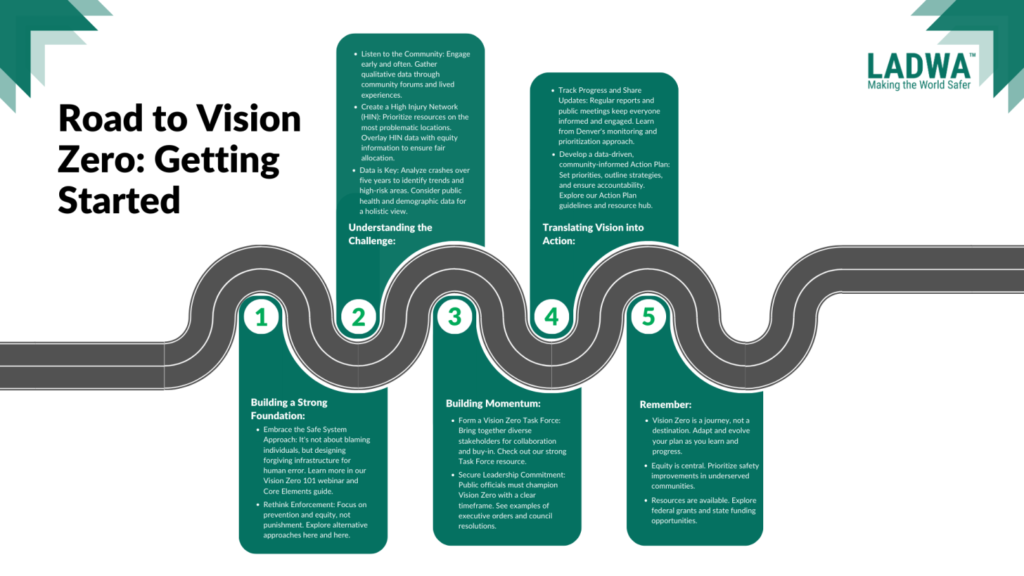

The five-star road infrastructure framework is a comprehensive approach to rating and designing road infrastructure to prevent accidents and injuries. This concept pushes the boundaries of road safety elements to their limits and beyond, ensuring that the infrastructure is designed to protect all road users, even in the event of a collision.
Key aspects of the five-star road infrastructure include:
- Separation of different modes of transportation (e.g., pedestrians, cyclists, and vehicles) to minimize the risk of collisions
- Incorporation of advanced safety features, such as median barriers, roundabouts, and pedestrian crossings with traffic signals
- Optimization of road geometry, including curve radii, sight distances, and lane widths, to enhance visibility and reduce the risk of loss-of-control crashes
- Use of high-friction surfacing materials and skid-resistant road markings to improve traction and braking performance
- Integration of intelligent transportation systems (ITS) to monitor and manage traffic flow, provide real-time information to road users, and enable automated safety interventions
By implementing these measures, the five-star road infrastructure aims to create a forgiving environment that can mitigate the consequences of human errors and reduce the severity of crashes.

The shared responsibility concept in Vision Zero represents a paradigm shift in road safety, where both road users and system designers are held accountable for preventing fatalities and serious injuries. This approach recognizes that the responsibility for road safety cannot be placed solely on the individual road user, but rather on the entire system that includes infrastructure, vehicles, and regulations.
Key elements of the shared responsibility approach include:
- Collaboration between various stakeholders, such as transportation authorities, vehicle manufacturers, and road safety organizations, to develop and implement comprehensive safety strategies
- Adoption of a holistic system perspective that considers the interactions between all road users, modes of transportation, and the built environment
- Emphasis on the role of system designers in creating a safe and forgiving environment that accounts for human error and limitations
- Promotion of a safety culture that encourages all road users to take responsibility for their actions and contribute to the overall safety of the transportation system
By fostering a shared responsibility mindset, the Vision Zero approach aims to create a more equitable and effective road safety framework that addresses the systemic factors contributing to crashes.

The Safe System Approach is a comprehensive framework that prioritizes the safe passage of vulnerable road users, such as pedestrians, cyclists, and motorcyclists. This approach recognizes that human beings are inherently fragile and that the transportation system should be designed to account for their limitations and protect them from the consequences of crashes.
Key elements of the Safe System Approach include:
- Designing roads and infrastructure to reduce the risk of crashes and mitigate the severity of injuries, even in the event of a collision
- Implementing speed management strategies, such as lower speed limits and traffic calming measures, to create a safer environment for vulnerable road users
- Promoting the use of advanced vehicle safety technologies, such as automatic emergency braking and pedestrian detection systems, to enhance the protection of all road users
- Fostering a safety culture that encourages all road users to adopt safe behaviors and respect the needs of others
- Integrating data-driven decision-making and continuous improvement processes to identify and address emerging safety challenges
By adopting the Safe System Approach, Vision Zero aims to create a transportation system that is inherently safe and resilient, where the consequences of human error are minimized, and the safety of all road users is prioritized.

Intelligent Transport Systems (ITS) play a crucial role in the advanced concepts of Vision Zero by leveraging advanced technologies and data integration to create safe and efficient environments for road users. ITS encompasses a wide range of applications, including:
- Speed management: Utilizing variable speed limits, adaptive traffic signals, and connected vehicle technologies to manage vehicle speeds and reduce the risk of crashes.
- Traffic signal optimization: Optimizing traffic signal timing and coordination to improve traffic flow, reduce congestion, and enhance safety for all road users.
- Automated enforcement: Deploying automated enforcement systems, such as red-light cameras and speed cameras, to deter unsafe driving behaviours and improve compliance with traffic laws.
- Connected and autonomous vehicles: Integrating connected and autonomous vehicle technologies to enhance vehicle-to-vehicle (V2V) and vehicle-to-infrastructure (V2I) communication, enabling real-time safety interventions and improved situational awareness.
- Incident management: Leveraging real-time data and communication systems to quickly detect, respond to, and manage traffic incidents, reducing the impact on road safety and mobility.
- Multimodal integration: Integrating different modes of transportation, such as public transit, shared mobility, and active transportation, to create a seamless and safe transportation network.
By harnessing the power of ITS, Vision Zero aims to create a more intelligent, connected, and responsive transportation system that can proactively identify and mitigate safety risks, ultimately contributing to the goal of zero fatalities and serious injuries on the roads.

Awareness and education are crucial components of the advanced concepts in Vision Zero, as they play a vital role in promoting safe behaviours and reducing the risk of accidents among all road users.
Key aspects of the awareness and education initiatives include:
- Targeted campaigns and outreach programs to educate drivers, pedestrians, and cyclists on safe practices, such as distraction-free driving, yielding to vulnerable road users, and proper use of safety equipment.
- Collaboration with schools, community organizations, and media outlets to raise awareness about road safety and foster a culture of shared responsibility among all road users.
- Incorporation of road safety education into driver’s education and licensing programs to ensure that new drivers are equipped with the knowledge and skills to navigate the transportation system safely.
- Continuous monitoring and evaluation of the effectiveness of awareness and education initiatives, allowing for the refinement and adaptation of these programs to address emerging safety challenges.
By empowering road users with knowledge and promoting a shared understanding of road safety, Vision Zero aims to complement the other advanced concepts and create a comprehensive approach to eliminating fatalities and serious injuries on the roads.
Conclusion
Vision Zero represents a transformative approach to road safety, shifting the focus from reactive measures to proactive and preventive strategies. By embracing advanced concepts such as five-star road infrastructure, the Safe System Approach, and the integration of cutting-edge technologies, Vision Zero is paving the way for a future where traffic fatalities and serious injuries are a thing of the past. These innovative strategies highlight the importance of a holistic and inclusive approach to road safety, one that prioritizes the well-being of all road users.
As we continue to push the boundaries of traditional road safety thinking, it’s crucial to support initiatives and solutions that align with Vision Zero’s goals. Ladwa Solutions Inc. is at the forefront of this movement, offering a range of products and services designed to enhance road safety and contribute to a safer transportation system. From advanced traffic management solutions to state-of-the-art safety equipment, Ladwa Solutions Inc. is committed to making Vision Zero a reality.
Ready to take the next step in creating safer roads? Contact Ladwa Solutions Inc. today to learn more about how their innovative products and services can help you achieve Vision Zero in your community. Together, we can build a future free from traffic fatalities and serious injuries.

